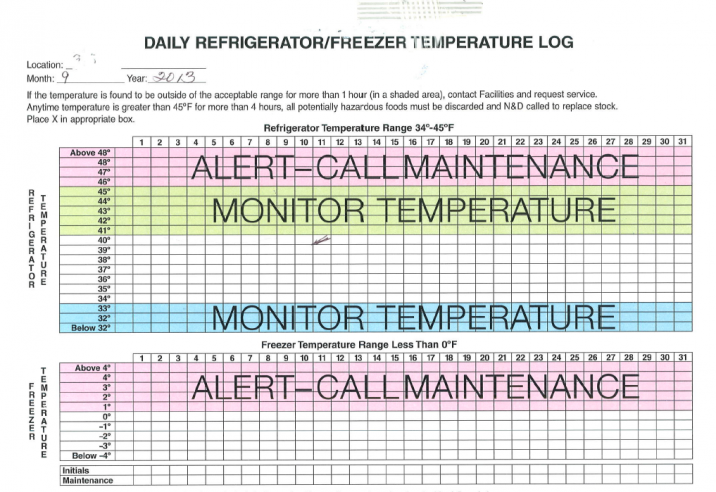
So many of the blogs, articles, and news stories you read before Thanksgiving will only focus on those that have the day off. Unfortunately, if you work in Healthcare, specifically Healthcare food service, there is a good chance you’re working.
First, You’re awesome. Hospital staff who show up on holidays to ensure that patients receive the proper treatment and accommodations are really, really, awesome.
Instead of generating a list of “Best Ways to Prank the Cousins You Don’t Like On Thanksgiving,” or “21 Recipes That Will Make You the Star of Your Family,” we wanted to help you out on your work day, and hopefully absolve some of your worries and headaches.
We chose food safety, because that is what we know best.
Keeping food safe can be a struggle on big holidays, so below we've outlined some tips that will help you on your day-on, because no one wants to end up in the news.
Monitoring Temperature
We help people in the food industry monitor their temperatures, so we are obviously gonna include this. To start, we want to show you something:

That is a document that we see all too often in hospitals. For those who don't know, that is a temperature recording chart. Hospital staff check the temperature of a refrigerator once or twice a day, write down the temperature, and file the chart away. Sound okay? It's not.
Temperature fluctuations in refrigerators and freezers are going to occur this Thanksgiving season (excess of food, added/subtracted thermal mass, doors being left open too often). Be ready for them. Checking the temperature of your hospitals food only once a day does not account for the multiple temperature fluctuations that will happen in between that 24-hour interval.
So, yes, get yourself a data logger with alarms. We would of course like to suggest our product line. But, whatever you decide, please get one. You and your patients will appreciate it.
To further push you towards a temperature data logger, here are just a few Thanksgiving foods that should be kept cold:
- Turkey
- Brussels Sprouts
- Cranberries
- Green Beans
- Asparagus
- Broccoli
- Carrots
- Mushrooms
- Whipping Cream
And that's just the tip of the iceberg. Also, i'm hungry.
Food Preparation
You are going to have an excess of food, while the space you prepare it in is going to remain the same size. It will be very, very easy to mix counters, forget to wash cutting boards, and set vegetables next to raw meats. DON’T! Resist the urge, and take special care to keep that raw turkey away from your lettuce. The FDA recently had this to say to consumers at Thanksgiving:
Consider using one cutting board only for foods that will be cooked (such as raw meat, poultry, and seafood) and another one for those that will not (such as raw fruits and vegetables).
For providers, the same ideology applies. It may in fact be more difficult to follow this suggestion in a health care facility, because the amount of food and thus number of preparation spaces and utensils is greater, but special car should still be taken when preparing your Thanksgiving meal (and all meals for that matter).
Bacteria's Ideal Temperature
Bacteria is out there. As some Discovery Channel specials will tell you, it's absolutely everywhere. Luckily, there are good bacteria and bad bacteria. The bad bacteria, like Salmonella and Listeria, likes to get inside your system and mess things up.
Preventing bacteria growth in food starts with proper storage. Whether you are using a standard Igloo refrigerator/freezer in a small clinic, or industrial sized equipment at a large hospital, your food needs to be kept in there, and out of the bacteria "Danger Zone." The "Danger Zone," (okay, fine, here's the link to the Top Gun video) is a range of temperatures that bacteria will multiply very quickly in. It is usually thought to be from 40-140F, basically anywhere but the refrigerator/freezer or a cooking surface (stove, oven, grill).
The easiest way to stunt bacteria growth? Keep all food required to be in the refrigerator in the refrigerator until it needs to be cook, least minimizing the time it sits out in ambient room conditions.
Sanitize Cooking Utensils
This seems self evident, but many times, we let the dishwashing water get cold. Don't let it get cold! Oh, and use a dishwasher. A dishwasher that get's the water temperature above 165F. How do you test that? With a data logger of course!
*While we do believe in the content we create, this information should not be taken as a substitute from regulatory standards. If you have questions about your own standards you must comply to, contact your auditing agency.
